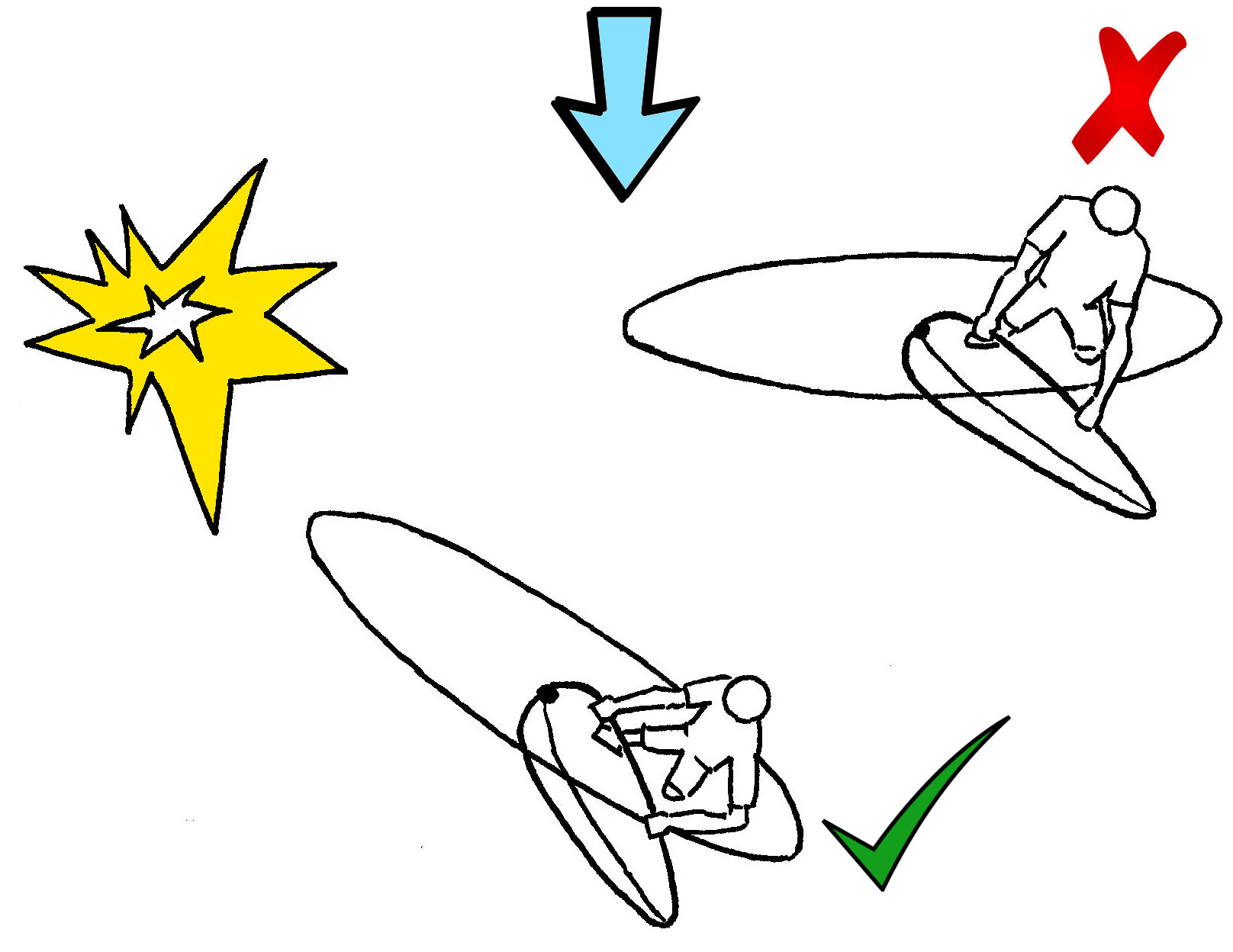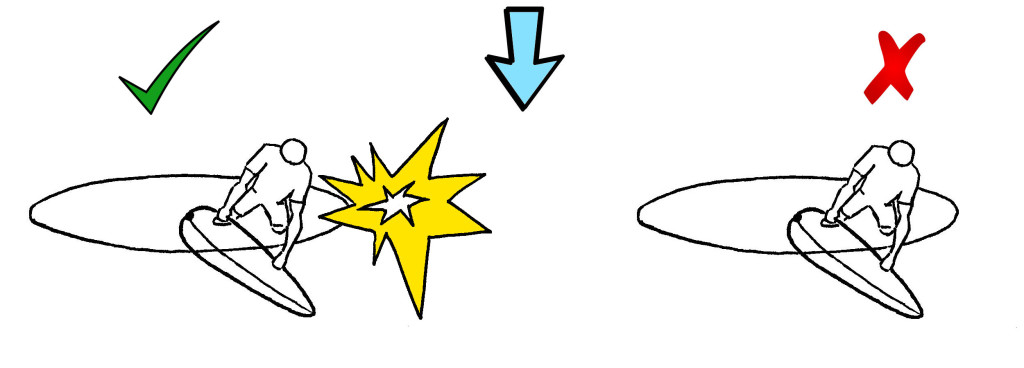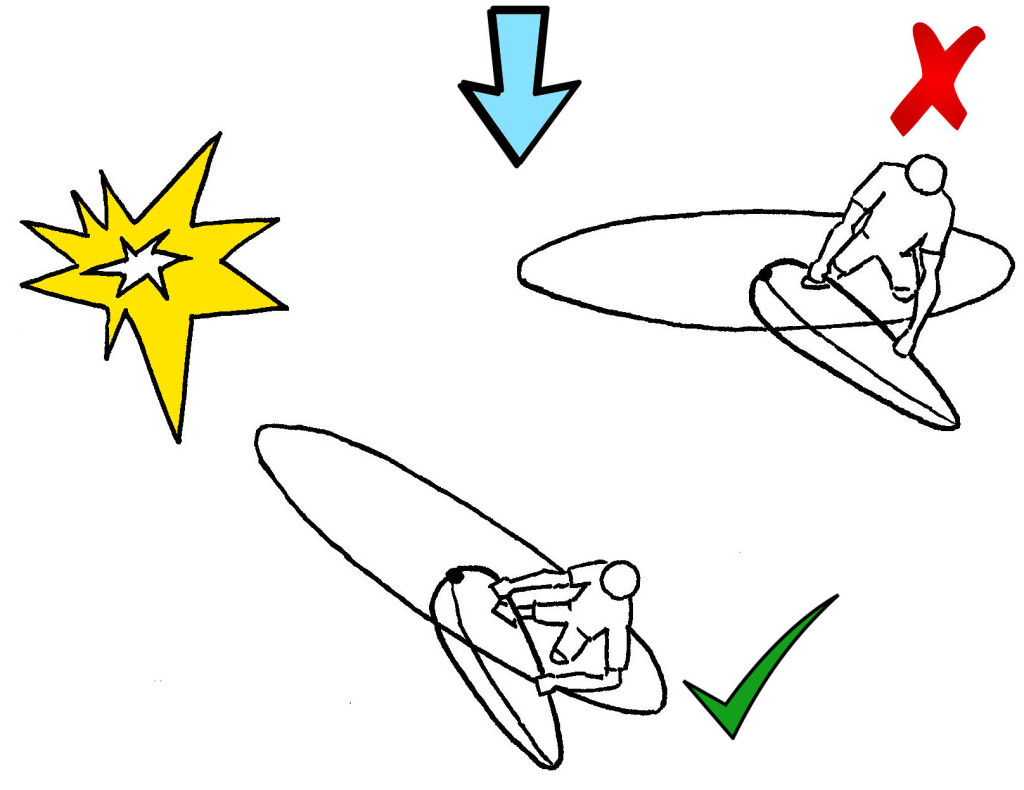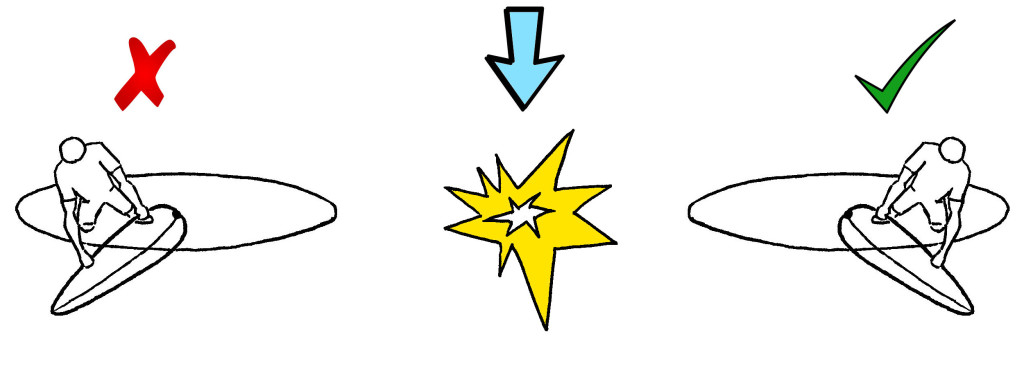Once we are sailing back and forth we need to consider that we are indeed not the only ones on the water. In order to avoid collision we must abide by the rules of right of way of the sea. First we will look at the hierarchy of the different vessels on the water. The ones on top have more priority whereas the ones towards the bottom need to get out of the way (according to boatus.com).
Vessels not under command
—
Vessels restricted in their ability to manoeuver
(freighter that take ages to turn)
—
Vessels constricted by draft
(freighter in a channel)
—
Fishing vessels engaged in fishing, with gear deployed
—
Sailing vessels
(windsurfers & other sailing boats)
—
Rowboats
—
Power driven vessels
(motorboats)
Basically, the ones that have more difficulty in manoeuvering are the ones who have priority.
Now that we have established whom we need to avoid and who needs to act to get out of our way, lets see how the rules apply withing the sailboat category:
In the first two rules, one person will not be able to see the other. We must keep in mind that the responsibility of avoiding the collision is always going to be of the person that can see the other. Makes sense, doesn’t it?
Overtaking person needs to avoid collision
When two windsurfers going on the same tack, one behind the other and the one behind is going faster with the intention to overtake. As the person that is in front is looking forwards (as they should) they are not going to see who is coming up behind them. So it is on the person that is going to overtake them to avoid collision. And no, shouting to get their attention to make them get out of the way does not make you exempt from this obligation nor is it good form to do so.
Downwind over upwind
Again, two windsurfers sailing on the same tack. The one going that is downwind is going to have a hard time seeing the one upwind. Therefore, the one sailing upwind has the obligation to change his course if the one downwind decides to bear into the wind. If the one downwind can continue on the closed haul course, so can the one upwind. That being said, if you are going to bear into the wind, make the small effort to turn your head to avoid any scares or close calls.
Port bow over starboard bow
This is the only rule for which a call had to be made in terms of priority as both people are in the same situation. Two windsurfers are headed toward eachother on different tacks. Both can see eachother and effectively one must get out of the way. Which? Instead of using technical terms, let’s just put it this way. The one with the left hand nearer to the mast must change their course to avoid collision.
However, the one with their right hand closest to the mast has the obligation of staying on their course. They cannot go changing their course as they please as it makes the decision difficult for the one whi must get out of the way to decide on which way to avoid into.
In the end, it all comes down to common sense and common courtesy. Don’t be a nuissance on the water and try to play fair when having to share the water with others. If in doubt on what to do you can just stop or turn around. More than once have I had to hit the brakes due to the other not knowing the rules and changing course when they shouldn’t or simply being arrogant dicks and ignoring all rules. Most of the close call have been when two people decide they can both still arrive upwind of the predicted collision point and so not have to bear away.
As a small side note, these rule apply to when we are sailing on “flat” water. That is to say, not in breaking waves. When we are sailing in breaking waves where people are riding the wave and jumping around, the rules are a little different. I will write a post on that in the future. However, these are the ones that will count 95% of the time so abide by them.








I would submit another “rule.” Make some effort to make your jibes, jumps, and even simply passing, such that you keep a mast’s distance from other people. No one’s perfect. I was once nearly knocked unconscious from someone dropping their mast on my head as they failed a jibe. Could easily have been avoided.
Very good point Mike! Thanks!
This is really basic, but missing a major rule. When sailing in waves, different rules apply, and the guy heading out has right of way over the guy heading in, regardless of whether you are on port or starboard tack. This is the main rule when wavesailing, based on the guy on the wave having more control than the guy heading out though waves.
– And makes life difficult on bump and jump days when either the wave rules or the port and starboard rules ‘could’ apply.
Most rules are however based on common sense and on the sailor avoiding possible collision.
We have this exact problem
In El Médano. Thanks for the comment! 🙂
What are the rules if there are both windsurfs and kitesurfs in the same area?
The rules remain the same. They are both considered sailing vessels and thereby have to abide by these rules.
The rule is a bit sketchy in windsurfing and kitesurfing in waves. In Windsurfing, the right of way is to the one who go out. In Kitesurfing, it’s to the one who surf.
mmm, ws has ALWAYS the right of way on ks. It makes no sense to apply the same rules, due to the differences between the two sports!
A powerboat that is towing has priority over sailing vessels sic ability to manoeuver
That is correct. I should add that in the article. Thanks for mentioning it 🙂
Never forget “Tonnage Rights”.
The vessel with the tonnage has the rights….
Staring down a freighter with a windsurfer isn’t a good idea even if you have the right of way.
However the larger vessel loses ROW if does not maintain course heading. Even if approaching from smaller vessel’s port side. i.e. can’t suddenly turn into smaller vessel’s path and claim ROW.
During the last few years spots become more and more dangerous, speaking for both windsurfing & kitesurfing, and imagine when on one spot are allowed both sports…. becomes quite scary!
We don’t know whether with years surf schools instructors forget to teach exactly this part of the theory, but quite often we see non-compliance in the water (for kitesurfers also on the beach), fortunately everything goes away with minor incidents. Be careful!
Fishing vessels engaged in fishing does not mean recreational anglers. It refers to commercial fishing with nets, trawls, etc. that are deployed (in use)